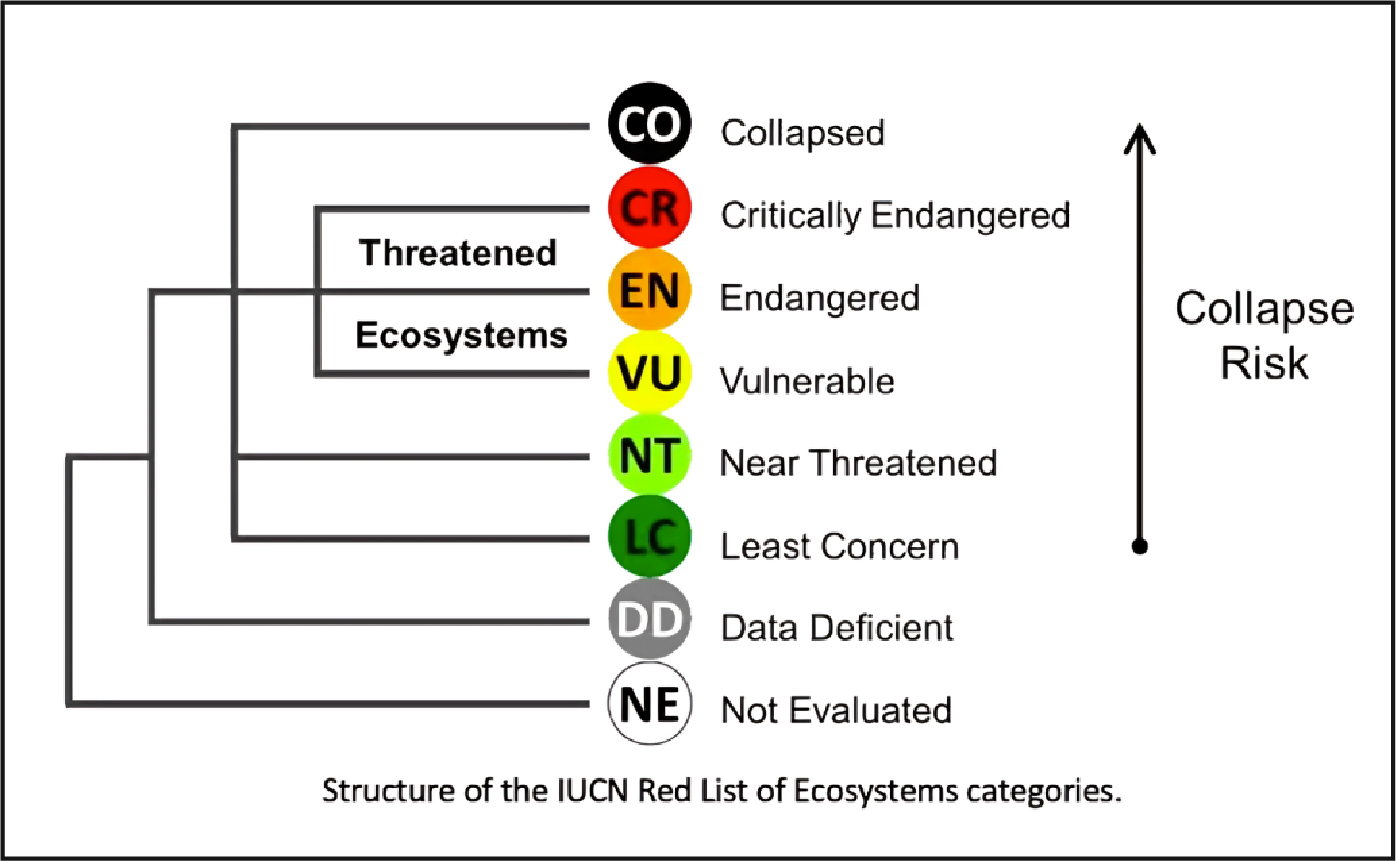For the first time, an ecosystem group has been assessed entirely using the IUCN Red List of Ecosystems (RLE).
- IUCN’s RLE is a global standard for measuring the health of ecosystems, assess threat levels and identifying most effective management pathways.

Key Findings of the assessment
- 50% of mangrove ecosystems assessed are at risk of collapse with nearly 20% at high risk (classed as either Endangered or Critically Endangered).
- Threats to mangroves: Climate change, deforestation, development, pollution, dam construction and climate change.
- Climate change threatens one third (33%) of assessed mangrove ecosystems.
- Due to sea-level rise, 25% of global mangrove area is predicted to be submerged in the next 50 Years.
- Without significant changes by 2050, climate change and sea level rise will result in loss of around 1.8 billion tonnes of carbon stored and exposure of 2.1 million lives to coastal flooding.
- Status of Indian Mangroves: Andaman and Bay of Bengal (Least Concern), South India (Critically Endangered), West India (Vulnerable).
Importance of Mangroves
- Provide essential ecosystem services and ecological support for fisheries and biodiversity.
- Acts as carbon sinks storing around 11 billion tons of carbon.
- Improves water quality through filtering pollutants and trapping sediments.
- Protect coastal regions from disasters such as floods, storms etc.
Initiatives for Mangroves
|






